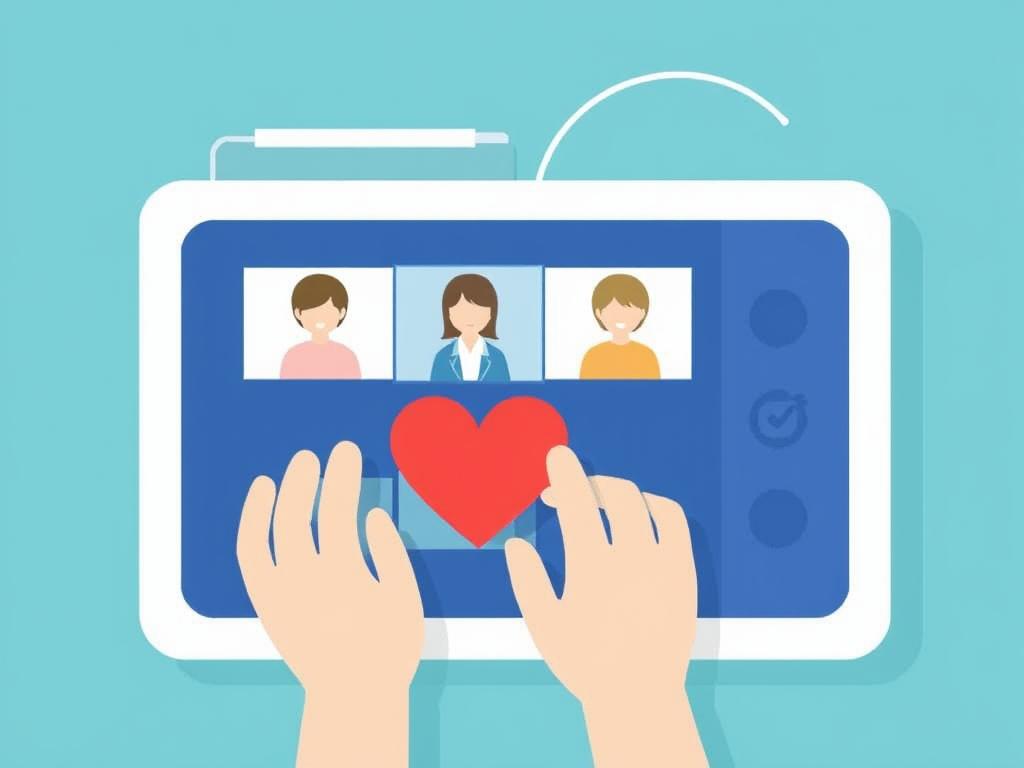Imagine a world where taking your child to the doctor doesn’t involve long waits in crowded waiting rooms, frantic last-minute scheduling, or anxious trips in bad weather. Thanks to the blossoming field of pediatric telemedicine, this vision is becoming a reality. Pediatric telemedicine is transforming the way children receive healthcare by bringing medical consultations right into the comfort of your home. But what exactly does this mean for parents, doctors, and most importantly, the little patients? Let’s dive deep into this fascinating topic and explore how pediatric telemedicine is reshaping children’s health for the better.
What is Pediatric Telemedicine?
At its core, pediatric telemedicine involves the use of digital communication technologies to provide healthcare services to children remotely. This doesn’t just mean video calls with doctors; it encompasses a complex infrastructure of tools like mobile apps, remote monitoring devices, and secure messaging platforms that make pediatric healthcare more accessible and efficient. The primary goal is to bridge the gap between healthcare providers and young patients, regardless of their location, reducing barriers such as travel time, geographical distance, and even social anxiety that some children experience in traditional clinical settings.
Think of it as having your pediatrician’s office in your living room. Whether it’s a routine checkup, managing chronic conditions like asthma or diabetes, or even seeking advice for a sudden fever or rash, pediatric telemedicine offers a quick, safe, and often cost-effective solution.
The Technologies Powering Pediatric Telemedicine
Behind every successful telemedicine encounter are technologies that ensure clear communication, accurate data collection, and secure transfer of sensitive health information. Here are some of the key players:
- Video Conferencing Tools: Platforms like Zoom Health and proprietary telehealth portals enable real-time face-to-face consultations between children and pediatricians.
- Remote Patient Monitoring Devices: Wearables and home-use medical devices such as pulse oximeters, digital thermometers, and glucometers help collect vital signs remotely.
- Mobile Health Apps: Apps that track symptoms, remind patients about medication, or enable secure messaging between parents and providers.
- Electronic Health Records (EHR) Integration: Seamlessly connecting telemedicine visits to a child’s existing medical history for comprehensive care management.
Ensuring privacy and compliance with regulations like HIPAA (in the U.S.) is also a cornerstone of pediatric telemedicine technology, as the safety of a child’s medical information is paramount.
The Advantages of Pediatric Telemedicine for Families

Parents today juggle an enormous amount of responsibilities. Adding healthcare appointments for children to the mix often means time off from work, scrambling to find childcare for siblings, and logistical challenges that can be, frankly, exhausting. Pediatric telemedicine emerges as a welcome relief offering many distinct benefits that families appreciate:
1. Convenience and Accessibility
One of the biggest wins of telemedicine is its ability to bring healthcare right to your fingertips. No more long drives or waiting in the clinic—especially important when your child is sick and comfort is a top priority. For families living in rural or underserved areas where pediatric specialists may be scarce, telemedicine can be a literal lifeline.
2. Reduced Exposure to Illnesses
Hospitals and clinics can be breeding grounds for infections. When your child is already unwell or immunocompromised, minimizing their exposure to other sick patients is crucial. Pediatric telemedicine allows for care without added risk—your child can stay home and avoid the waiting room crowded with germs.
3. Faster, More Flexible Care
Virtual appointments often have greater scheduling flexibility, including evenings or weekends. Some platforms even offer on-demand consultations that can address urgent concerns rapidly, giving parents peace of mind.
4. Enhanced Chronic Disease Management
For children with chronic conditions such as asthma, diabetes, or epilepsy, frequent monitoring and communication with healthcare providers are vital. Telemedicine’s remote monitoring capabilities mean doctors can keep a closer eye on health status between in-person visits.
5. Emotional Comfort for Children
Going to the doctor can be intimidating or stressful for many kids. Remote visits in familiar environments can ease anxiety, fostering better cooperation and engagement during the consultation.
Challenges and Limitations in Pediatric Telemedicine
While pediatric telemedicine holds remarkable promise, it’s important to recognize that it’s not a flawless solution. Challenges and limitations must be addressed to ensure safe, effective care for children.
Technology Barriers and Digital Divide
Not every family has access to reliable high-speed internet, smartphones, or computers. This technology gap can widen healthcare disparities, especially for low-income or rural populations. Some families may struggle with the digital literacy necessary to navigate telemedicine platforms effectively.
Medical Limitations of Remote Diagnosis
Certain physical examinations can only be performed in person—like listening to heart and lung sounds, palpating abdominal pain, or conducting specific developmental assessments. Telemedicine works best as a complement to traditional care rather than a complete replacement.
Privacy Concerns and Data Security
Because pediatric telemedicine involves communication over digital networks, ensuring strong data encryption and privacy compliance is critical. Parents and providers alike must be vigilant about protecting sensitive health information from unauthorized access.
Insurance Reimbursement and Regulations
Although expanding, insurance coverage and reimbursement for pediatric telemedicine services vary greatly by region and provider. Regulatory frameworks continue to evolve, and inconsistent policies may limit who can access certain telehealth services and under what conditions.
Popular Use Cases for Pediatric Telemedicine
What does pediatric telemedicine look like in practice? Here are some of the most common scenarios where virtual pediatric care shines:
| Use Case | Description | Benefits |
|---|---|---|
| Acute Illness Consultation | Consultations for common illnesses such as colds, flu, rashes, or ear infections conducted via video call. | Quick advice without the need for travel, rapid symptom management, reduced exposure risk. |
| Chronic Disease Monitoring | Remote tracking of conditions like asthma or diabetes using connected devices, combined with virtual check-ins. | Improved disease control, early intervention for flare-ups, enhanced patient engagement. |
| Mental Health Support | Telepsychiatry or counseling for behavioral and emotional health issues accessible from home. | Privacy, reduced stigma, flexible scheduling, easier follow-up. |
| Post-Hospitalization Follow-Up | Virtual visits after a hospital stay to monitor recovery and medication adherence. | Reduces readmission rates, convenience for families, better continuity of care. |
| Developmental and Behavioral Assessments | Initial screenings and parent-guided assessments conducted remotely with specialists. | Early identification of developmental concerns, easier access in underserved areas. |
How Pediatricians Are Adapting to Telemedicine
The pediatric healthcare community has recognized the potential of telemedicine and is actively integrating it into their service offerings. Training programs now include telemedicine best practices, and pediatricians are learning how to conduct effective virtual visits that maintain the warmth and trust essential in pediatric care.
Communication techniques adapt as well—encouraging interaction from both child and parent, using creative methods such as digital toys or drawing apps to engage younger patients, and paying close attention to non-verbal cues via video.
Additionally, many pediatricians collaborate closely with schools, therapists, and caregivers to create cohesive care plans supported by telemedicine, ensuring that the child’s environment supports their overall wellbeing.
Legal and Ethical Considerations in Pediatric Telemedicine

Because we’re dealing with children—one of the most vulnerable patient groups—there are several ethical and legal dimensions that pediatric telemedicine must navigate carefully:
- Consent and Assent: Parents or guardians must provide informed consent for telemedicine visits, and when appropriate, children also give assent to participate.
- Confidentiality: Especially critical for adolescent patients seeking sensitive care such as mental health or sexual health counseling, ensuring privacy is maintained even in the home environment.
- Licensure and Jurisdiction: Pediatricians must confirm they are licensed to provide telemedicine services in the patient’s location, which can be complex across state and national lines.
- Quality of Care: Maintaining standards equivalent to in-person visits is a continuous priority, including appropriate follow-up protocols and emergency guidance when necessary.
Future Trends in Pediatric Telemedicine
The evolution of pediatric telemedicine is ongoing, with exciting trends shaping the future of children’s healthcare. Here’s what we can expect in the coming years:
Artificial Intelligence (AI) Assistance
AI-powered symptom checkers, predictive analytics, and decision support tools promise to enhance diagnostic accuracy and personalize care plans tailored for each child’s unique needs.
Augmented Reality (AR) and Virtual Reality (VR)
Emerging technologies may facilitate remote physical exams or create therapeutic environments for children coping with chronic illnesses or disabilities, bringing interactive and immersive elements into telemedicine encounters.
Expanded Remote Monitoring Capabilities
Advancements in wearable sensors and home-based diagnostic tools will allow continuous, precise monitoring of vital signs and health parameters with minimal intrusion, enabling more proactive interventions.
Greater Integration with Schools and Community Resources
Telemedicine platforms could connect pediatric providers, educators, and social workers more seamlessly, allowing holistic approaches that address social determinants of health in children’s lives.
Policy and Payment Reforms
Ongoing advocacy is likely to result in increased coverage and standardized regulations supporting pediatric telemedicine, making virtual care more accessible and sustainable worldwide.
How Parents Can Prepare for a Pediatric Telemedicine Visit
Parents often feel unsure about what to expect or how to get the most out of a pediatric telemedicine appointment. Preparing ahead makes a big difference. Here are some practical tips:
- Test Your Technology: Ensure your device has a working camera, microphone, and a stable internet connection.
- Gather Medical Information: Have your child’s medications, symptoms, and any relevant documents ready.
- Prepare the Child: Explain what to expect in simple terms and choose a quiet, well-lit space with minimal distractions.
- Have Questions Ready: Write down your concerns beforehand to make sure you don’t forget during the conversation.
- Take Notes: Document the doctor’s advice, prescriptions, or follow-up plans for reference.
Summary Table: Pediatric Telemedicine Pros and Cons
| Advantages | Challenges |
|---|---|
| Convenient and time-saving for families | Limited physical exam capabilities |
| Reduces exposure to infectious diseases | Technological access disparities |
| Enhanced chronic disease management | Privacy and security concerns |
| Flexible scheduling and rapid care | Variable insurance reimbursement |
| Emotional comfort for children in familiar settings | Regulatory and licensure complexities |
Conclusion
Pediatric telemedicine is more than just a trend—it’s a transformative approach to healthcare that meets families where they are, quite literally. By combining advanced technology with compassionate care, this healthcare model is breaking down traditional barriers and making children’s medical services more accessible, efficient, and tailored to individual needs. While challenges remain, ongoing innovations and policy improvements promise to expand its reach and impact. For parents and pediatricians alike, embracing telemedicine opens up new possibilities, ultimately creating a healthier, happier future for children everywhere.